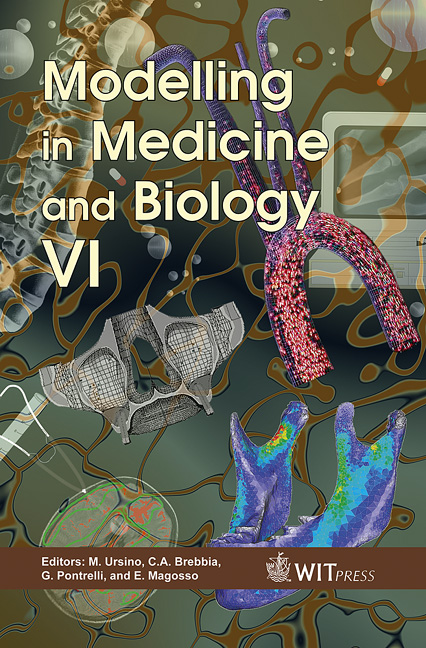Estimation Of Lower Airway Resistance In Expiratory Flow Limitation During Mechanical Ventilation
Price
Free (open access)
Transaction
Volume
8
Pages
10
Published
2005
Size
336 kb
Paper DOI
10.2495/BIO050041
Copyright
WIT Press
Author(s)
P. Barbini, G. Cevenini & M. R. Massai
Abstract
Determining the level of expiratory flow limitation (EFL) in critical mechanically ventilated patients is of clinical relevance for choosing appropriate respiratory treatment and/or pharmacological therapy. In many respiratory diseases, EFL arises from pathological changes in the mechanical properties of the bronchial tree. These properties cannot be evaluated using common lumped-parameter models or conventional estimation approaches based on measured mouth pressure and flow data, because during EFL expiratory flow no longer depends on the difference between alveolar and mouth pressure (Starling resistor effect). Starting from simulation data obtained by a dynamic non linear lumped-parameter model recently proposed for interpreting the main effects of EFL, we developed a two-step procedure which analyses inspiration and expiration separately in mechanically-ventilated flow-limited patients, thus enabling total resistance of deeper airway generations influencing the onset of EFL to be estimated. The negative expiratory pressure method was used to detect the presence of flow limitation during expiration. The model-to-model approach showed that lung and chest wall elastances and resistance of the lower bronchial tree could be estimated with reasonable accuracy from mouth flow and mouth and pleural pressure data. The estimated values are consistent with the mechanical properties of the lower generations of the bronchial tree described by the forward model. On the basis of these estimated parameters, the end-expiratory occlusion technique also allows the end-expiratory lung volume to be determined. Keywords: respiratory system, breathing mechanics model, expiratory flow limitation, mechanical ventilation, parameter identification, resistance.
Keywords
respiratory system, breathing mechanics model, expiratory flow limitation, mechanical ventilation, parameter identification, resistance.





